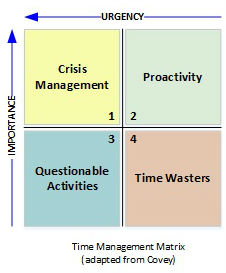
Ever Wonder If Procrastination is Killing Your Sales?
It is said that the number of people procrastinating has tripled since the 70s. One thing that is not a secret: Procrastination is a problem for sales teams. Procrastinating prospects lead to stalled sales that never close. Worse, procrastinating salespeople stall out on sales that ought to close. Worst, the problem is often difficult to identify clearly and even harder to remedy.
The addition of mobile devices, social media, and 24/7 news and connectivity doesn’t help. Today’s sales forces are faced with a barrage of potential distractions that provide quick hits of dopamine—the “reward” chemical our brains give us every time we complete an “achievement” in the latest online game or get a “like” on our latest social media post.
Likewise, customers have more options and information than ever at their fingertips to distract them from making a decision. Could it be that these factors are a major contributor to the continuing decline in sales effectiveness over the past several years?
For sales executives, the problem is a pervasive one. Some organizations try to “solve” it by limiting access to social media during the work day, or punishing the poor outcomes that result from procrastinating behaviors, but neither approach gets to the root of the problem, and both approaches have unfortunate side effects. Limiting social media access means that your salespeople can’t use social media as a prospecting and nurturing tool, and punishing poor outcomes only addresses the problem after it’s already a problem, which can be de-motivational to future performance.
But what if there were a way to truly address the causes of procrastination, treat them at the source (both for customers and salespeople), and drive sales teams to exceptional performance?
There is. Here are five “secret” steps to take to drive out procrastination and drive up sales performance on your team.
One: Know what’s important
Faced with an endless variety of activities to choose from—posting on social, answering emails, making cold calls, following up on old sales leads, playing golf with a potential customer, recording their activities, filing paperwork—salespeople will often dink around doing less-important things to the detriment of the more-important things. Some estimate that the bulk of salesperson work hours are wasted on non-essential activities.
Some of this can be attributed to fear, laziness, or ADHD, but the vast majority is due simply to not knowing which of those activities is most important to achieve success. In order for sales executives and managers to get their teams focused on the important things, they must first become clear on what actually matters, and then make that clear to the sales team.

Determining what is important (perhaps using the well-known Eisenhower Matrix) will be most effective when it’s informed by real data and then propagated effectively throughout the organization. This can be accomplished using the right software to track and understand which salesperson behaviors drive the best results.
Two: Create a system that rewards focus on what’s important
Some salespeople will be motivated simply by understanding which activities matter to their bottom line, but without reinforcement and ongoing training, most salespeople will return to old habits as soon as their excitement over a new “idea” wears off. That’s why it’s important to build a system that overtly rewards salespeople for focusing on the daily “important” activities, and not just on the outcome of those activities.
Three: Break it into chunks
One of the big reasons that social media, gaming, and small but insignificant tasks (like answering emails) create such a powerful distraction for salespeople is that they provide frequent small hits of dopamine. Every time someone “likes” or “comments,” every time a new “achievement” is reached, and every time they mark an item off the “to do” list, the body literally sends “feel-good” chemicals to the brain to celebrate. That’s hard to combat with sheer willpower.
Smart sales organizations, instead of wringing their hands over the difficulty of competing with procrastination distractions, harness the lessons those distractions have to offer: Break the desired tasks into chunks, and offer up the dopamine hits your sales team craves, in exchange for completing the tasks that matter (see #1 above).
This “chunking” also applies to deadlines. Many procrastinators work well under pressure—when there’s a deadline looming, they kick into high gear and get it done, and then slack off again until the next deadline. While this is preferable to not meeting deadlines, it’s counterproductive to long-term success if they’re only kicking into high gear around the end of the quarter. Smart organizations chunk deadlines into small pieces, based on activities and accomplishments that matter (again, #1), and enforce the smaller deadlines rather than waiting for a “big” deadline.
Four: Create visibility & transparency
In order to reinforce and support the positive activities you know matter, your sales coaches and managers need visibility. They need to see both when a salesperson is lagging, and when a prospect is procrastinating, and when they themselves are. Your system should include software tools that show managers when a slow-down occurs, and helps them to identify the cause, so they can coach and manage their people through the slump and get them back on track quickly.
Five: Create a positive feedback loop
Once your anti-procrastination system is up and running, you’ll be able to see more clearly where your problems lie, as well as where your sales team is doing well. Over time, patterns will develop that show you where common bottlenecks occur, and where top performers are doing something different that’s getting them results. Make it part of your system to respond to this feedback and recognize when the “what’s important” part of the equation changes or develops. Feed that information back into the system, so that you continually improve how and what you reward.
Once you implement these five “secrets” for your sales team, you’ll see immediate short-term results in your team’s productivity, which will ultimately contribute to better long-term results. To get there, you’ll need the right tools and software, and you won’t be surprised to learn that Membrain is built to fight procrastination and support your team’s productivity.

By George Brontén
George is the founder & CEO of Membrain, the Sales Enablement CRM that makes it easy to execute your sales strategy. A life-long entrepreneur with 20 years of experience in the software space and a passion for sales and marketing. With the life motto "Don't settle for mainstream", he is always looking for new ways to achieve improved business results using innovative software, skills, and processes. George is also the author of the book Stop Killing Deals and the host of the Stop Killing Deals webinar and podcast series.
Find out more about George Brontén on LinkedIn








